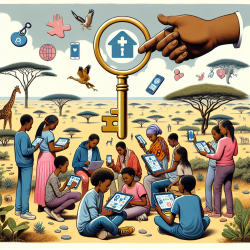Revolutionizing Oral Health Care for Indigenous Communities: The Two-Eyed Seeing Approach
Oral health disparities are a pressing issue in Indigenous communities worldwide. These populations often face significant challenges in accessing adequate oral health care, resulting in poorer health outcomes compared to the general population. However, a groundbreaking approach, known as "Two-Eyed Seeing," offers a promising solution by integrating Indigenous and Western knowledge systems to improve oral health care delivery.
Understanding Two-Eyed Seeing
The concept of Two-Eyed Seeing, developed by Mi’kmaq Elders Murdena and Albert Marshall, emphasizes the importance of viewing the world through both Indigenous and Western lenses. This approach encourages practitioners to harness the strengths of both knowledge systems to create more effective and culturally sensitive health care solutions.
Key Findings from the Scoping Review
A recent scoping review conducted by Shrivastava et al. systematically mapped integrated primary oral health care programs in Indigenous communities using the Two-Eyed Seeing framework. The review identified four main categories of programs:
- Oral Health Promotion and Prevention Programs: These initiatives focus on educating Indigenous communities about oral health and implementing preventive measures.
- Comprehensive Dental Services: Programs that integrate dental services into existing health care frameworks to provide a wide range of dental care.
- Fly-In, Fly-Out Dental Services: Temporary dental services provided by professionals who travel to remote areas.
- Teledentistry: Utilization of technology to provide dental consultations and care remotely.
Approaches to Integration
The integration of oral health into primary care involves both biomedical and Indigenous approaches:
- Biomedical Approaches: These include leadership and governance, administration and funding, capacity building, infrastructure and technology, teamwork, and evidence-based practice.
- Indigenous Approaches: These focus on holistic health, culturally appropriate services, community engagement, shared responsibility, and cultural competence.
Program Outcomes
The review highlighted the effectiveness of integrated oral health programs in improving access to care and oral health outcomes in Indigenous communities. Programs that embraced community-based and culturally appropriate strategies were particularly successful. However, the review also noted a lack of measurement for spiritual outcomes, indicating an area for future research.
Implications for Practitioners
For practitioners working with Indigenous populations, the Two-Eyed Seeing approach offers valuable insights for improving oral health care delivery. By integrating Indigenous knowledge with Western practices, practitioners can develop more culturally sensitive and effective health care solutions. This approach not only addresses current disparities but also empowers Indigenous communities to take an active role in their health care.
To further explore the integration of oral health into primary care for Indigenous populations, practitioners are encouraged to delve deeper into the original research. Understanding the nuances of the Two-Eyed Seeing framework can enhance their ability to implement effective and culturally respectful health care strategies.
To read the original research paper, please follow this link: Two-eyed seeing of the integration of oral health in primary health care in Indigenous populations: a scoping review.










